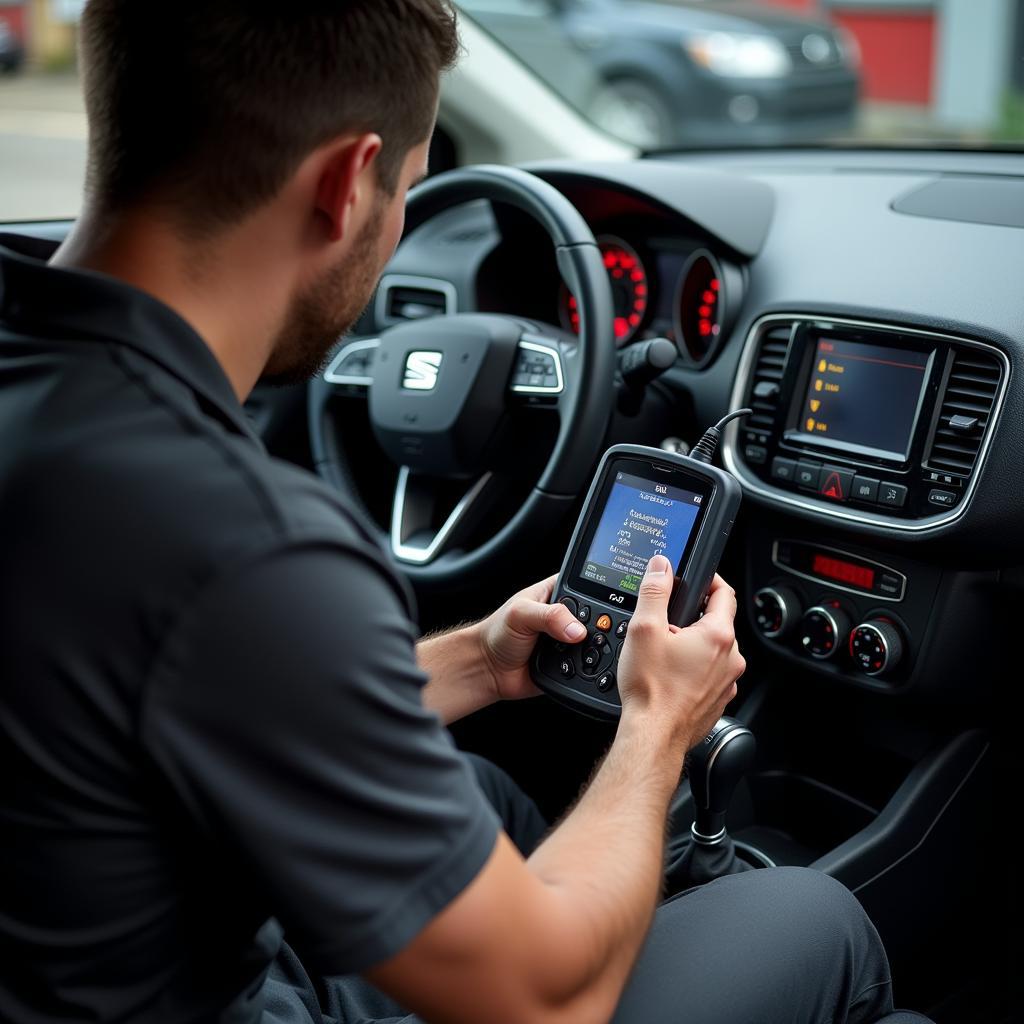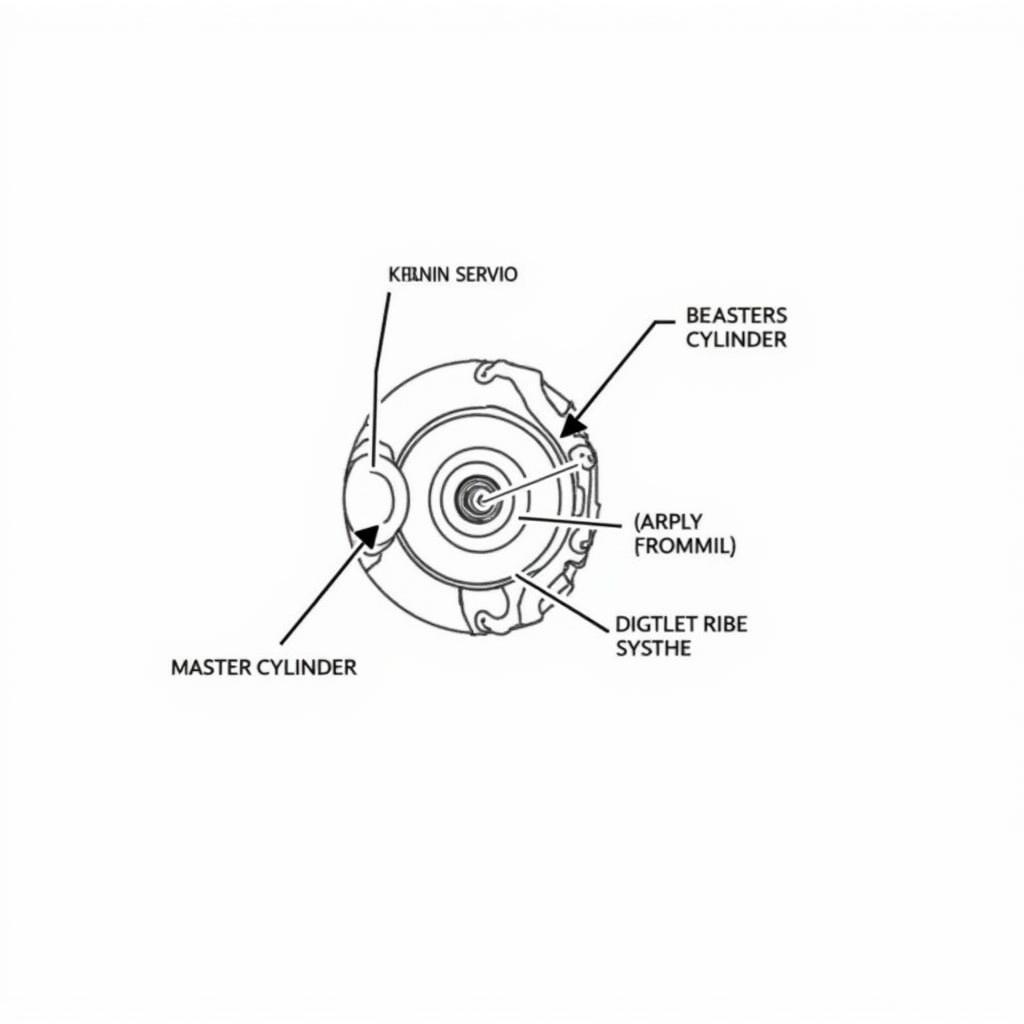Dealing with car theft is a nightmare scenario, but knowing how to identify anti-theft devices in cars can provide peace of mind. While modern vehicles often come equipped with sophisticated security systems, understanding the signs of these devices can be crucial when purchasing a used car or assessing your own vehicle’s protection level. Let’s explore the common indicators of anti-theft devices in cars.
Recognizing the Telltale Signs of Car Anti-Theft Systems
Visual Cues: A Quick Scan for Deterrents
Many anti-theft devices have visual deterrents to discourage potential thieves. Keep an eye out for:
- Steering Wheel Locks: These physical devices attach to the steering wheel, preventing it from turning.
- Window Stickers and Decals: While not a physical deterrent, stickers advertising anti-theft systems can make thieves think twice.
- Visible Alarm LEDs: A blinking LED light on the dashboard usually indicates an active alarm system.
Audible Signals: Listen for the Warnings
- Alarm Sounds: Car alarms emit loud, attention-grabbing noises when triggered by unauthorized entry or movement.
- Horn Honking: Some systems use the car horn as part of their alarm sequence.
Immobilization Features: Preventing Engine Start
- Key Fobs with Immobilizers: Most modern cars have key fobs with built-in immobilizers that communicate with the vehicle’s computer. If the correct signal isn’t received, the engine won’t start.
- Kill Switches: These hidden switches, often installed in the fuel or ignition system, disable the engine and require a specific sequence to reactivate.
Delving Deeper: Advanced Anti-Theft Technology
GPS Tracking Systems: Locating Your Car
GPS tracking devices allow you to pinpoint your car’s location in case of theft. Some systems even allow for remote engine shutdown.
Telematics Systems: Connected Car Security
Services like Subaru’s Starlink or Kia’s UVO offer features such as automatic collision notification, emergency assistance, and stolen vehicle tracking.
Diagnostic Software: Unlocking the Car’s Brain
Diagnostic tools, like those offered by Cardiagtech, can retrieve valuable information about your car’s anti-theft system, including error codes, alarm triggers, and system status. These tools can be crucial for diagnosing and resolving anti-theft system issues.
“Using the right diagnostic software can be like having x-ray vision into your car’s anti-theft system,” says automotive security expert Dr. Emily Carter. “It allows you to understand the system’s status, identify potential vulnerabilities, and ensure it’s functioning correctly.”
FAQs: Answering Your Anti-Theft Queries
Q: What does the Kia anti-theft upgrade do?
A: For more detailed information about Kia’s anti-theft upgrades and how they enhance your vehicle’s security, you can explore our comprehensive guide: What does the Kia anti-theft upgrade do?
Q: Is the Starlink in Subaru considered an anti-theft device?
A: To learn more about whether Subaru Starlink can be classified as an anti-theft device and its security features, check out our dedicated article on the topic: Is the Starlink in Subaru considered an anti-theft device?
Q: How do I turn off the anti-theft system on my Ford Fusion?
A: We understand the frustration of dealing with a malfunctioning anti-theft system. If you’re looking for guidance on how to disable the anti-theft system on a Ford Fusion, we have a step-by-step guide available here: How to turn off anti-theft on Ford Fusion
Cardiagtech: Your Partner in Automotive Security
Understanding your car’s anti-theft system is crucial for its protection. By familiarizing yourself with the visual cues, audible signals, and advanced technologies, you can make informed decisions about your vehicle’s security.
Remember, CARDIAGTECH offers a range of diagnostic products and services designed to help you understand and maintain your car’s intricate systems. For any further assistance with anti-theft systems or other automotive issues, feel free to reach out to our team of experts. We are always happy to assist!


